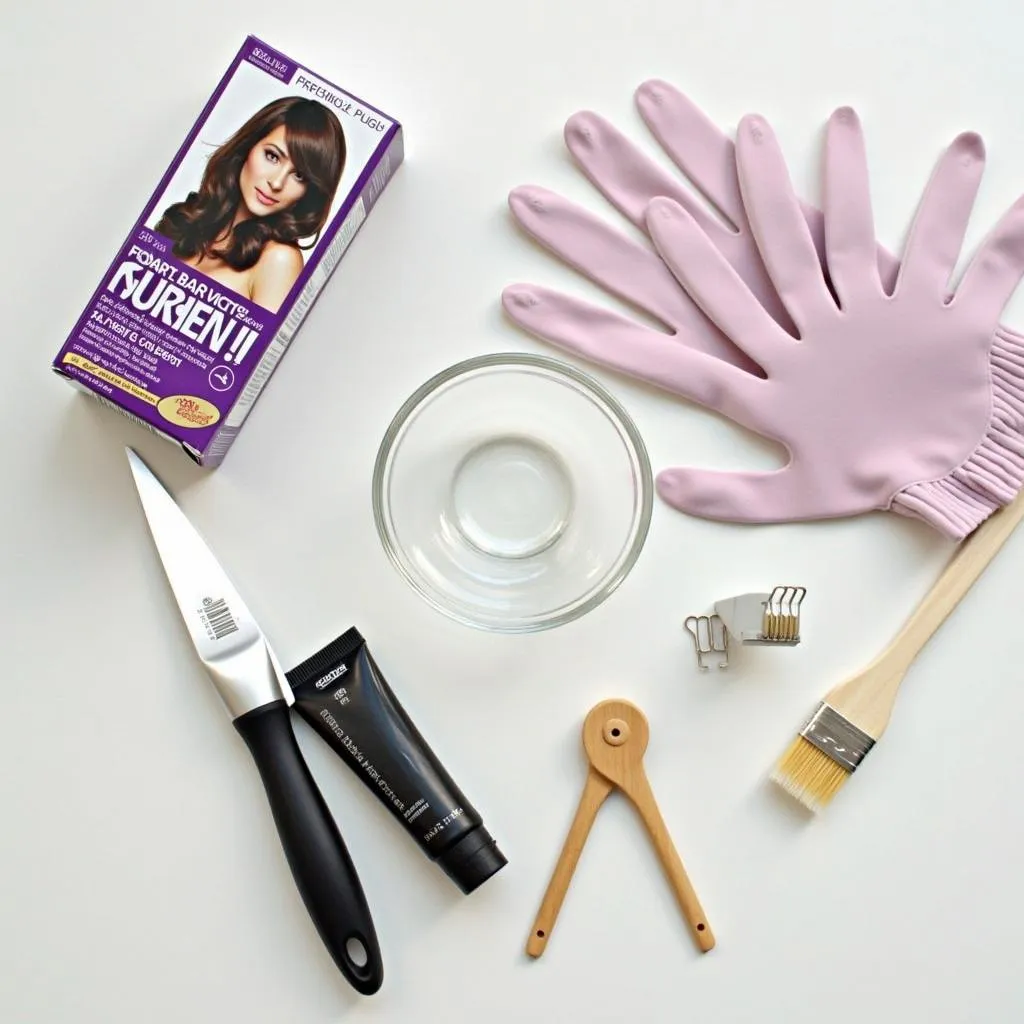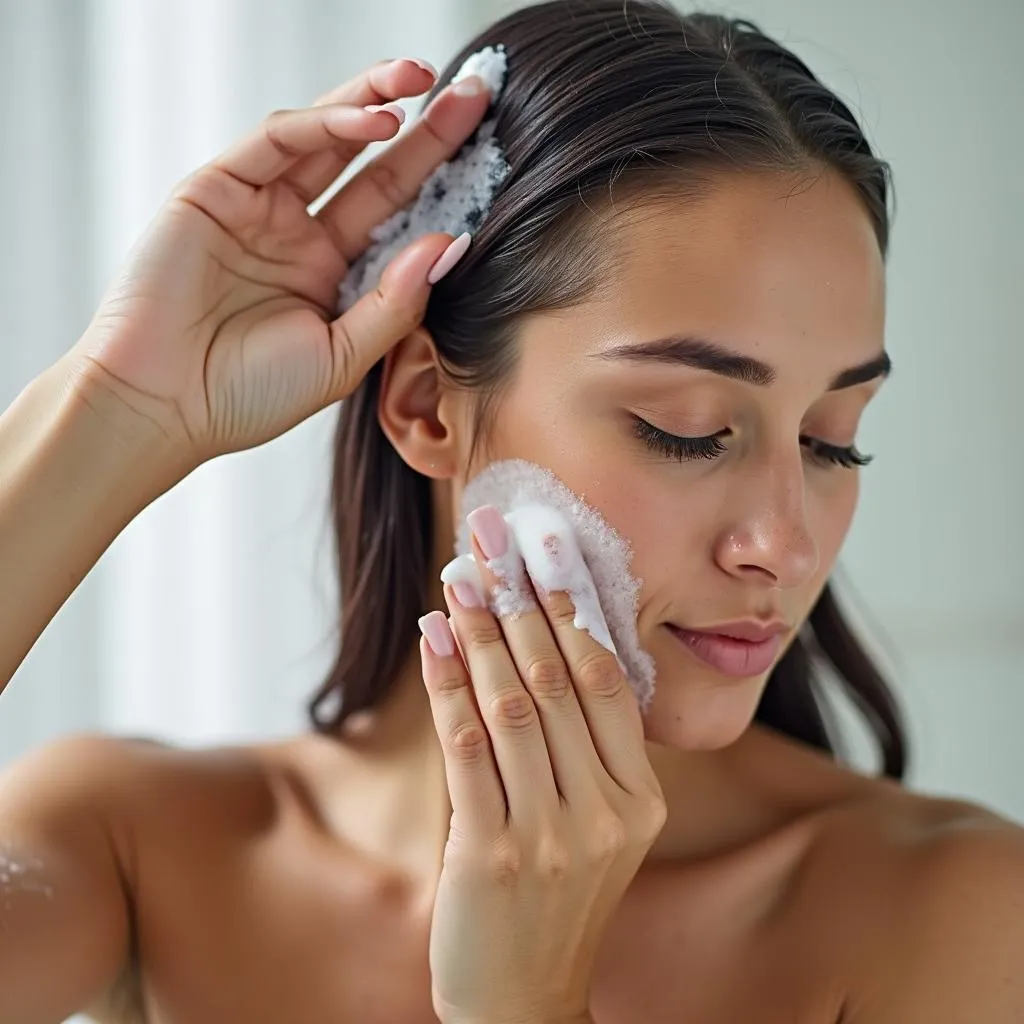Preparing your hair for coloring is crucial for achieving vibrant, long-lasting results and minimizing damage. While coloring your hair can be exciting, it’s essential to treat your hair with care before applying any dye. This comprehensive guide will walk you through the essential steps on How To Prepare Hair For Coloring like a pro.
Understanding Your Hair and the Coloring Process
Before diving into the preparation steps, it’s vital to understand your hair type and the science behind hair coloring. Different hair types react differently to dye, and knowing how the coloring process works can help you make informed decisions.
Hair Types and Porosity
Hair porosity refers to your hair’s ability to absorb moisture and product. There are three main types:
- Low porosity: Hair cuticles are tightly sealed, making it difficult for moisture or color to penetrate.
- Medium porosity: Hair cuticles are more relaxed, allowing for better absorption of moisture and color.
- High porosity: Hair cuticles have gaps and holes, leading to quick absorption but also quicker loss of moisture and color.
Knowing your hair porosity can help you choose the right hair dye and adjust the processing time accordingly.
The Science of Hair Coloring
Hair color products contain ammonia and peroxide, which work together to lift the natural pigment of your hair and deposit new color molecules. Understanding this process is essential for minimizing damage and achieving desired results.
Pre-Coloring Hair Care Routine
A consistent hair care routine in the weeks leading up to your coloring appointment can significantly impact the outcome.
1. Deep Condition Regularly
Deep conditioning treatments help restore moisture, strengthen hair strands, and create a smooth canvas for color application. Aim to deep condition your hair 1-2 times per week, especially if you have dry or damaged hair.
2. Avoid Over-Washing
Washing your hair too often can strip away its natural oils, leaving it dry and more susceptible to damage during the coloring process. Limit washing to 2-3 times per week and use a sulfate-free shampoo to preserve natural oils.
3. Clarify Your Scalp
Product buildup can create a barrier on the scalp, hindering the dye from penetrating the hair shaft evenly. Use a clarifying shampoo once a week to remove product buildup and ensure a clean base for color application.
One Week Before Coloring
As you get closer to your coloring appointment, focus on prepping your hair for optimal color absorption and minimizing potential damage.
4. Trim Split Ends
Split ends are more porous than healthy hair and can absorb more color, leading to uneven results. Schedule a trim to get rid of split ends and ensure an even color application.
5. Avoid Heat Styling
Excessive heat styling can weaken hair strands and make them more prone to damage during the coloring process. Minimize or avoid using heat styling tools like straighteners and curling irons in the week leading up to your appointment.
48 Hours Before Coloring
In the final 48 hours, focus on protecting your hair and scalp from irritation during the coloring process.
6. Don’t Wash Your Hair
It’s best to avoid washing your hair for at least 48 hours before coloring. This allows your scalp’s natural oils to act as a protective barrier, minimizing potential irritation from the dye.
7. Perform a Patch Test
Always perform a patch test 48 hours before applying any hair color, especially if you’re using a new product or have sensitive skin. This helps identify any potential allergic reactions.
On the Day of Coloring
8. Protect Your Skin and Clothing
Wear an old button-down shirt or a towel around your shoulders to protect your skin and clothing from accidental dye stains.
9. Detangle Your Hair
Gently detangle your hair before applying color to prevent tangles and ensure even distribution of the dye.
 Hair dye kit and tools prepared on table
Hair dye kit and tools prepared on table
Post-Coloring Hair Care
10. Rinse with Cool Water
After coloring, rinse your hair with cool water to seal the cuticles and enhance color vibrancy.
11. Use Color-Safe Products
Invest in color-safe shampoos and conditioners formulated to prevent color fading and maintain hair health.
 Woman applying hair conditioner in the shower
Woman applying hair conditioner in the shower
Frequently Asked Questions
How often should I color my hair?
The frequency of coloring depends on your hair type, the color you choose, and your desired look. Touch-ups are generally recommended every 4-6 weeks for root coverage, while highlights or balayage can last several months.
Can I color my hair if I have a sensitive scalp?
If you have a sensitive scalp, it’s crucial to choose hair dyes specifically formulated for sensitive skin and always perform a patch test 48 hours before coloring.
How can I prevent my hair color from fading?
Using color-safe hair products, avoiding excessive heat styling, and protecting your hair from sun exposure can help prevent premature color fading.
Can I go swimming after coloring my hair?
It’s best to wait at least 72 hours after coloring before swimming in chlorinated water, as chlorine can strip away hair color and cause dryness.
What should I do if I experience an allergic reaction to hair dye?
If you experience any itching, burning, or redness after applying hair dye, immediately rinse your hair with cool water and consult a medical professional.
Need Help with Your Hair Color Journey?
Coloring your hair can be a transformative experience, and we’re here to help you achieve your desired look while keeping your hair healthy and vibrant. Contact us at 0373298888 or [email protected] for personalized advice and to book an appointment with our expert colorists at 86 Cầu Giấy, Hà Nội. Our dedicated team is available 24/7 to answer your questions and provide exceptional service. Let’s create a hair color story you’ll love!
